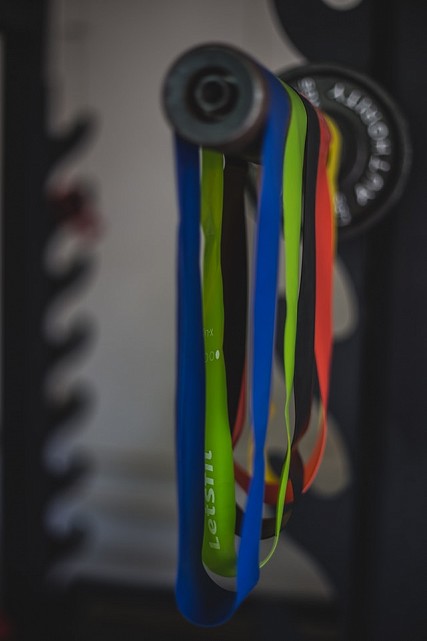Resistance Bands

Training against resistance is one of the most beneficial ways of improving our physical health by enhancing movement control, increasing muscle mass, managing weight and supporting our cardiovascular health. It also seems to impact our sense of self-esteem, so when you’re experiencing pain, it can be helpful to regain confidence in your body by exercising.
Resistance training can be achieved using various tools, including weights or resistance bands. In today’s blog, we’re going to focus on the latter. Resistance bands, also called elastic bands or TheraBands, are a convenient and cost-effective tool to have with you. Resistance bands have a positive impact on a diversity of people, including young and elderly people, male and female, as well as sedentary and active people. If you aren’t sure whether resistance bands are a tool that you could use, consult your osteopath to assess which form of exercise is best suited for you.
Not only do resistance bands affect people with different lifestyles and genetic profiles, but they also affect different musculoskeletal conditions. For example, a study found that a group of women suffering from computer-related neck pain experienced less pain and more neck mobility after performing a program of neck resistance exercises (Li et al, 2017). Similarly, football players who included a hip adduction exercise using a resistance band had greater adductor strength, subsequently decreasing their risk of developing groin injuries (Page, 2019). Resistance training can also help with chronic ankle instability, (CAI), iliotibial band syndrome (ITBS), or anterior shoulder dislocations (Gaballah et al., 2017; Hall et al., 2015; McKay et al., 2020).
Whether you’re experiencing pain or you’re simply looking for ways to improve your fitness, you can use elastic bands to your advantage. Resistance bands come in different levels which allows you to create a progressive exercise program. Retailers usually have 8 types of colour-coded resistance bands: tan, yellow, red, green, blue, black, silver, and gold. Yellow TheraBands give 1.3kg of resistance whereas gold ones give 6,5kg of resistance. Therefore, if you’re a beginner, it’s advised to start with a yellow band and work your way up towards the gold band.
To learn how to use resistance bands, don’t hesitate to email me or book your appointment for specific advice. As osteopaths, we work with injuries, aches and pains, posture etc. and use resistance bands to help your recovery.

